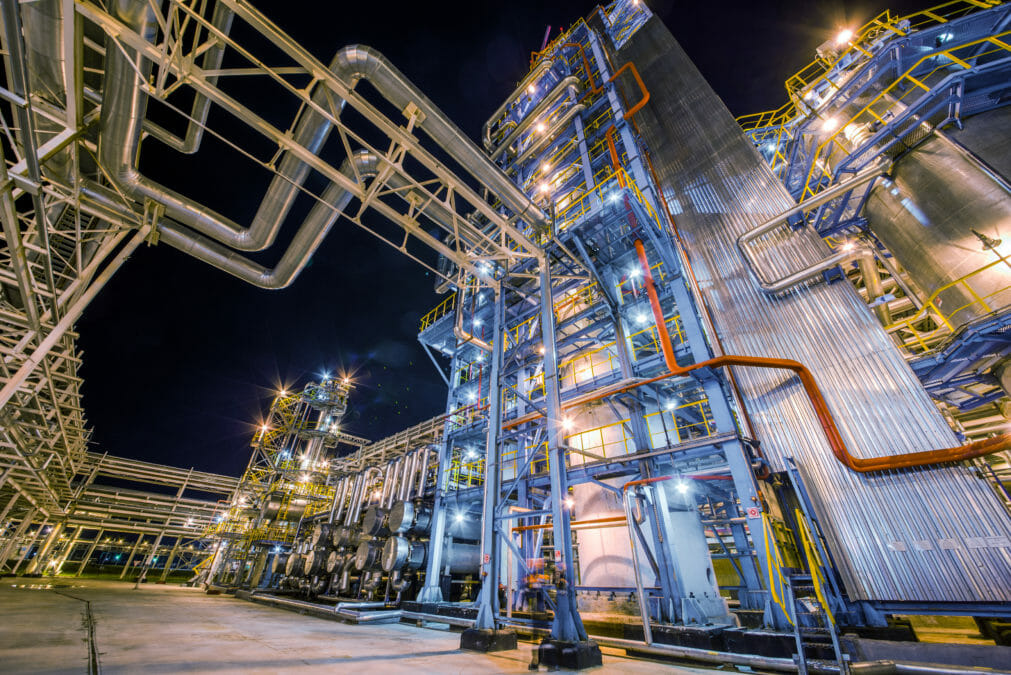Extreme fluctuations in oil demand and pricing have created a volatile landscape for the refining industry. Refinery executives and managers are being forced to examine new scenarios daily and evaluate each one for safety, environmental impact, logistics and economics. Their ability to analyse and react quickly and build reliability and resilience into their operations will be the key to sustaining their businesses and competitive advantage.
The ultimate vision for the industry is the self-optimising, autonomous plant – and the increasing deployment of artificial intelligence (AI) across the sector is bringing the reality of this ever closer. However, while refining has been an early adopter of many digital tools, the industry is yet to fully realise the potential of industrial AI.
That is, in no small part, because AI and machine learning are too often looked at in isolation, rather than being combined with existing engineering capabilities – models, tools and expertise, to deliver a practical solution that effectively optimises refinery assets.
Can we automate data quality to support artificial intelligence and machine learning?
These are assets that typically rely on engineering models built from the “first principles” of physics and chemistry, which encapsulate key domain knowledge such as process safety and understanding of the industry’s complex systems.
These models draw on the extensive experience of the world’s best scientists, process engineers and operators. They are highly accurate but have limitations in certain processes; to enhance their accuracy, plant data must be employed to calibrate them to observed plant conditions and performance. Currently, effective model calibration requires considerable expertise and experience.
Building a hybrid model
This is where AI and machine learning have a key role to play. These technologies are rapidly emerging as tools that can greatly accelerate the ability to employ plant data, both to calibrate first-principles models and to quickly create data-based models of phenomena and processes. AI has the potential to lower the expertise required to model process systems, but it must be combined with domain expertise to create the real-world “guardrails” that make it work safely, reliably and intuitively.
This combination enables what we call “hybrid models”, which effectively bring together AI and first principles to deliver a comprehensive, accurate model more quickly and without requiring significant expertise. And crucially, they serve as a vital staging post on the way to the self-optimising plant.
Machine learning is used to create the model, leveraging simulation, plant or pilot plant data. The model also uses domain knowledge, including first principles and engineering constraints, to build an enriched model — without requiring the user to have deep process expertise or be an AI expert.
The solutions supported by hybrid models act as a bridge between the first principles-focused world of the past and the “smart refinery” environment of the future. They are the essential catalyst helping to enable the self-optimising plant.
Lessons learned about open automation from the pandemic
Many companies today are reaping the rewards of a hybrid modelling approach. Refining and olefin margins are closely related to plant planners’ and operators’ ability to achieve monthly production that is as close to the plan as possible, and gaps can usually be traced to out-of-date or inaccurate planning models. One of the largest global refiners projects that the ability to generate up-to-date revisions of these detailed reactor models as often as needed will deliver value over $10 million annually for a typical 200,000-barrel-per-day refinery. This technology is especially timely as refineries contend with dramatic changes in the products they must produce.
Realising the vision of the self-optimising plant
The development of hybrid model solutions will also, for many refining companies, be the first step in realising the vision of the self-optimising plant. At AspenTech, we define this as a facility that can automatically adapt and respond to changing operating conditions.
Relying on a combination of AI and key domain knowledge, the self-optimising plant will rapidly assess all available data streams, both within an asset and beyond its boundaries. It will rapidly react to changing conditions to achieve the best possible outcome, taking into account safety, sustainability, asset health, and operational objectives. Further, it will use AI to anticipate future behaviour and provide workers and managers with future alternative operational scenarios.
Five things businesses need to think about when implementing AI
In the self-optimising plant of the future, operators and technicians will be making faster and more agile business decisions, freed up from low value-add, repetitive tasks by the systems that have closed the loop to operate the plant close to intended limits and automatically react to unexpected situations. Furthermore, asset reliability information and operating data will inform the models to achieve safer and more sustainable designs.
That’s the vision we are driving to. It will be a journey for the refining industry, but the advancement achieved through hybrid modelling is a transformative step in the journey to the self-optimising plant.











